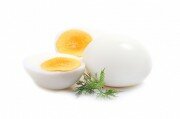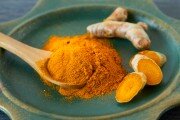Natural remedies to prevent and treat cataracts
According to recent estimates, as many as 80 per cent of people aged 75 and over in the UK have some form of cataracts. Although age is a major contributing factor, the condition can also be triggered by diabetes and the long-term use of steroids.
The disease occurs when proteins inside your lens (a flexible and transparent part of your eye which allows light to pass through) clump together, following a life-time of exposure to free radicals such as sunlight. The build-up of this abnormal mass of proteins in your lens is speeded up by high blood sugar levels this is one of the main reasons why diabetics are susceptible which attach to the proteins like glue and cause them to stick together.
Once this mass is formed, incoming light has great difficulty reaching your eye and your vision can soon become distorted. One or both eyes may be affected and over time the condition can result in complete blindness.
As alarming as this may sound, the good news is that there are simple steps you can take right now to prevent the condition from developing.
Could you be suffering from cataracts without even knowing it?
It is important you see an optician for a check up if you experience one or more of the following symptoms, as they are all signs of eye-related diseases, including cataracts:
- Worsening of your vision, which may make you feel like your vision is cloudy or fuzzy spots in your vision
- Difficulty driving at night due to the blinding headlights of oncoming traffic
- Street lamps and sunlight suddenly appear too bright
- Difficulty telling the difference between colours, especially shades of blue
- Having to change your glasses frequently as your eyesight deteriorates
Conventional treatment for cataracts depends on the severity of your condition. Eye drops called atropine may be prescribed, which dilate the pupil and help more light reach the inside of your eye. Surgery, which can completely restore your vision, is opted for when the quality of life of the patient is affected. This involves the removal of the diseased lens and implantation of an artificial one. This procedure can cause complications in some cases including infection (make sure you use the eye drops prescribed following surgery to prevent this). In a small number of cases surgery can lead to further visual impairment.
Take steps to fight free radical damage
One of the first preventative measures you should take is to reduce your exposure to free radicals. So quit smoking if you currently do and wear suitable sunglasses (those marked with CE the European Commission seal of approval which provide total UV absorption) when you go out in strong sunshine.
Taking antioxidants can also help limit the damage caused by free radicals. Take vitamin C (1,000mg daily), beta carotene (10,000IU a day) and vitamin E (400IU a day).
In addition, make sure you lower your sugar intake, as it contributes to the abnormal clumping of proteins inside your lens. One food to include more of in your diet, assuming you dont have a nut allergy of course, is hazelnuts. In an animal study, Turkish researchers from the Department of Ophthalmology, Military Medical School in Ankara, found that hazelnuts helped overcome cataract symptoms. They concluded that: Since hazelnut has no known harmful effect on healthy cells, it may be beneficial in human cataract.
7 nutritional supplements that can help preserve your vision
The following supplements have been found to lower the risk of cataracts. These may be particularly helpful if the condition runs in your family, as many researchers now believe there is a genetic link.
1. Carnosine is a compound found naturally in your body, particularly in muscle tissue. It not only prevents free radicals from attacking the lens of your eye, but also helps dissolve any abnormal material that has accumulated there thereby helping to reverse some of the damage that has already been done. The recommended dosage is 100mg capsule taken two to three times a day.
2. N-acetyl-carnosine (a variant of carnosine) is available in eye drop form (brand name Re-Vital Eyes). It has been found to be effective in both the prevention and treatment of cataracts . The recommended dosage is two drops, three times a day.
3. Inositol is part of the vitamin B complex and is an important constituent of your eye tissue and low levels have been linked to the formation of cataracts. The suggested dosage is 500mg to 1,000mg each day.
4. Curcumin is a common ingredient in curries and a well-known antioxidant. Indian scientists from the Physiology Division, Osmania University, Hyderabad, have discovered that curcumin, taken in conjunction with another antioxidant, vitamin E, can significantly reduce the risk of cataracts.
5&6. Lutein and zeaxanthin are essential eye nutrients. They protect against the formation of cataracts and also reduce the risk of developing macular degeneration, which affects a particular part of the retina, causing partial loss of vision. Lutein is used in capsule or tablet form, and the dose is up to 20mg a day. Another way to boost your supplies of lutein and zeaxanthin is to use bilberry extracts in capsule form, 150mg a day.
7. Emblica officinalis: This plant contains natural chemicals called tannoids, and is most commonly used in the treatment of diabetes. In an animal study, Indian researchers from the Biochemistry Division, National Institute of Nutrition, Hyderabad, found that tannoids extracted from emblica were able to prevent the formation of cataracts. The scientists believe that this remedy may be particularly beneficial for diabetics suffering from cataracts. This is because emblica helps reduce specific toxins, such as aldose reductase, which are often present in high amounts in diabetic patients. The recommended dosage is 250mg a day.
Did you find this information useful?
Then why not get more expert health recommendations just like this delivered direct to your inbox?
"It is truly refreshing to read a newsletter on the topic of alternative medicine which is scientifically based and reviewed by professionals..." - Robert Sinott
We respect your privacy and will never share your details with anyone else.
Disclaimer: Bear in mind the material contained in this article is provided for information purposes only. We are not addressing anyone’s personal situation. Please consult with your own physician before acting on any recommendations contained herein.
Sources:
Mol Vis. 2004 Mar 12;10:148-54
Indian J Exp Biol. 2006 Sep;44(9):733-9
Ophthalmol. 2006 Sep-Oct;9(5):311-6
Curr Eye Res. 2007 Feb;32(2):95-103
Life Sci. 2006;78(20):2343-57
Med Sci Monit. 2005 Aug;11(8):BR300-4
- Comments (3)
- Facebook Comments (0)
Comments are closed.











Interesting site and article… I am not a great believer in natural alternatives, but the way you put things may just get me convinced.
I suggest that the individual treatments recommended for problem of cataracts, be combined into one dose, to curb problem of may be running short of another one.
In your letters you state the the ingredient but no reference to its trade name or were it could be purchased.